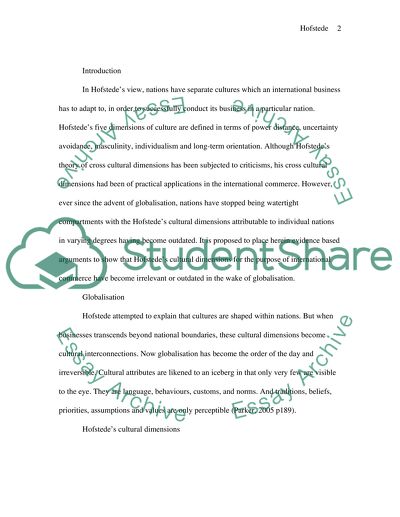Cite this document
(Hofstede's Cultural Dimensions Research Paper Example | Topics and Well Written Essays - 2000 words, n.d.)
Hofstede's Cultural Dimensions Research Paper Example | Topics and Well Written Essays - 2000 words. Retrieved from https://studentshare.org/human-resources/1565607-is-hofstedes-cross-cultural-work-outdated-international-human-resources
Hofstede's Cultural Dimensions Research Paper Example | Topics and Well Written Essays - 2000 words. Retrieved from https://studentshare.org/human-resources/1565607-is-hofstedes-cross-cultural-work-outdated-international-human-resources
(Hofstede'S Cultural Dimensions Research Paper Example | Topics and Well Written Essays - 2000 Words)
Hofstede'S Cultural Dimensions Research Paper Example | Topics and Well Written Essays - 2000 Words. https://studentshare.org/human-resources/1565607-is-hofstedes-cross-cultural-work-outdated-international-human-resources.
Hofstede'S Cultural Dimensions Research Paper Example | Topics and Well Written Essays - 2000 Words. https://studentshare.org/human-resources/1565607-is-hofstedes-cross-cultural-work-outdated-international-human-resources.
“Hofstede'S Cultural Dimensions Research Paper Example | Topics and Well Written Essays - 2000 Words”. https://studentshare.org/human-resources/1565607-is-hofstedes-cross-cultural-work-outdated-international-human-resources.


